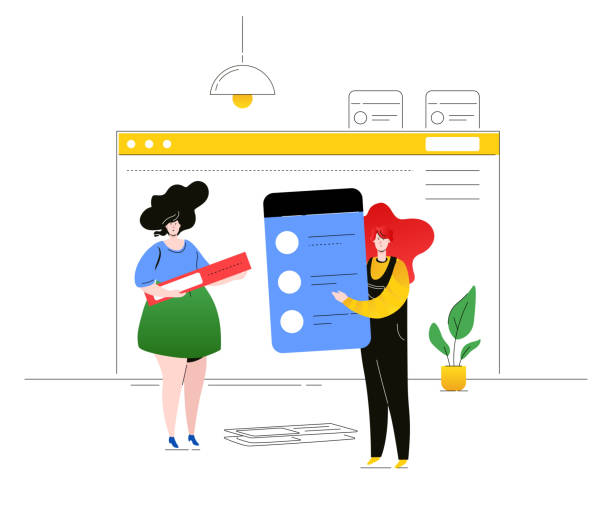The Importance and Necessity of Multilingual Website Design in Today’s World
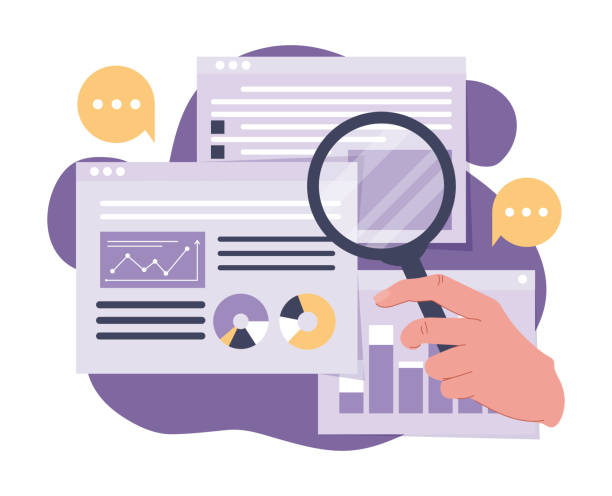
In today’s interconnected and globalized world, a powerful digital presence is vital for every business and organization.
One of the most important tools for reaching broader audiences and crossing geographical and cultural boundaries is #multilingual_website_design.
This approach not only allows you to convey your message in different languages but also builds greater trust and closeness with your users worldwide.
Suppose you have a product or service with global potential; without a multilingual website, how would you connect with your potential customers in Japan, Germany, or Brazil? They are very likely to search in their native language and prefer to read content in that same language.
In fact, research has shown that users are more inclined to purchase from websites offered in their language.
A single-language website, especially if it’s only in English, can deprive you of many valuable opportunities.
Multilingual website design helps you enter new markets, increase your website traffic, and ultimately improve your revenue.
This approach is not only a strategic choice but also a necessity for competing in the international arena.
On the other hand, it strengthens your brand on a global scale and demonstrates your respect for the cultural and linguistic diversity of your audience.
In the information age, easy access to content in one’s native language significantly enhances user experience and increases user retention on the site.
This section is explanatory and educational.
Are you concerned about your e-commerce website’s low conversion rate and not achieving your desired sales?
Rasaweb is your specialized solution for having a successful e-commerce website.
✅ Significant increase in conversion rate and sales
✅ Professional and user-friendly design to attract customer satisfaction
⚡ Ready for a transformation in online sales? Get a free consultation!
The Undeniable Advantages of an International Website
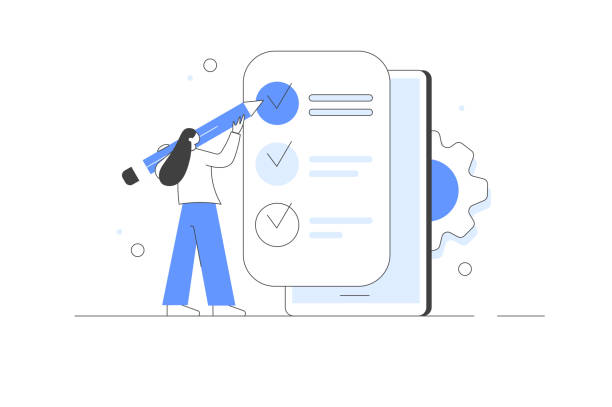
Why should one invest in multilingual website design? Is it merely for access to a larger market, or are there deeper reasons? The answer is that the benefits of a multilingual website extend beyond increased audience and encompass various aspects.
Firstly, by providing content in different languages, your conversion rate (Conversion Rate) significantly increases.
Users who receive information in their native language feel more comfortable and confident, and their likelihood of completing a purchase or registration process increases.
Secondly, this allows you to achieve better rankings in search engines in various countries.
#Multilingual_SEO is a specialized field that, by using techniques like hreflang tags, makes your website more accessible to local users.
Thirdly, creating a multilingual website gives you international credibility.
This demonstrates that you care about the needs of your users worldwide and are ready to offer your services beyond geographical boundaries.
This credibility can lead to increased trust from customers and potential business partners globally.
Have you ever wondered how large global companies achieved this success? One of their secrets is the ability to communicate effectively with their customers in every corner of the world, and this is where multilingual website design plays a vital role.
This section includes thought-provoking and analytical content.
Technical Challenges and Solutions in Multilingual Website Design
![]()
Multilingual website design is not limited to content translation; rather, it involves complex technical considerations that are crucial for project success.
One of the most important aspects is the URL structure.
You can use subdomains (e.g., fr.example.com), subdirectories (example.com/fr/), or top-level domains (example.fr).
Each has its own advantages and disadvantages in terms of SEO and management.
This structure choice should be made carefully and with consideration for your overall website strategy.
Another challenge is content management.
A powerful and flexible Content Management System (CMS) like WordPress with multilingual plugins such as WPML or Polylang, or Drupal which inherently supports multilingual capabilities, can simplify this process.
#Multilingual_content_management should ensure that translations are easily updatable and synchronizable.
Additionally, proper font loading for different languages, Right-to-Left (RTL) support for languages like Persian and Arabic, and ensuring the compatibility of all user interface elements with longer or shorter texts in different languages are among the issues that need to be carefully examined.
The table below shows some common challenges and their solutions.
This section is technical and guidance.
| Challenge | Description | Solution |
|---|---|---|
| URL Management | Choosing between subdomains, subdirectories, or TLDs. | Choosing the appropriate structure based on SEO goals and ease of management. |
| Content Management | Updating and synchronizing translations. | Using a robust CMS with multilingual capabilities (e.g., WPML). |
| RTL Support | Correct text display for Right-to-Left languages. | Using appropriate CSS for RTL direction and layout. |
| Language Selection | Mechanism for users to select language. | Clear display of flags or language names in the header or footer. |
Content Localization and Translation Strategies

Content translation is not merely replacing words from one language to another; rather, it involves the process of #localization, which adapts the content to the culture and linguistic habits of the target audience in each specific region.
For a successful multilingual website design, one must go beyond word-for-word translation and pay attention to cultural details, local idioms, units of measurement, dates, and even colors and images.
For example, an image that has a positive meaning in one culture might be considered inappropriate in another.
This process ensures that your message is correctly understood and resonates with the target audience.
For effective localization, you can use native-speaking translators specialized in your field of activity.
They not only provide accurate translations but also ensure that the tone and style of the content align with the local culture.
Additionally, Translation Management Systems (TMS) can significantly help in organizing and tracking the translation process.
These tools allow for the use of Translation Memory and Term Base, which contribute to translation consistency and speed.
Another important aspect is non-textual content such as images, videos, and audio files, which also need to be localized.
Ensuring that all visual and auditory elements are consistent with the target culture and language is essential for an optimal user experience.
This section is educational and technical.
Did you know that 85% of customers check your company’s website before any interaction?
With Rasaweb, build a corporate website that deserves your credibility.
✅ Increased credibility and customer trust
✅ Attraction of high-quality leads
⚡ Get a free website design consultation
Choosing the Right Content Management System for Multilingual Websites
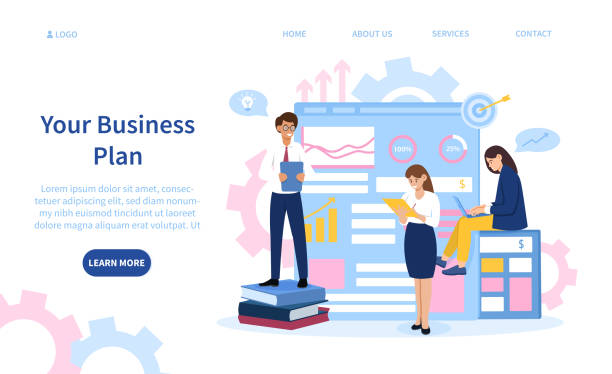
Choosing a Content Management System (CMS) is one of the key decisions in multilingual website design.
The right CMS should have strong and flexible multilingual capabilities to meet your long-term needs.
Systems like WordPress, Drupal, and Joomla each offer different solutions for multilingual management.
WordPress, by using specialized plugins like WPML and Polylang, provides the ability to create and manage multilingual content.
These plugins allow you to easily switch between languages, manage translations, and implement multilingual SEO.
A #multilingual_CMS should allow for easy addition of new languages and have a simple user interface for managing translations.
Drupal inherently supports multilingual capabilities and is a very suitable option for large and complex projects that require high flexibility and security.
Joomla, with its multilingual extensions, can also meet the needs of medium-sized websites.
When choosing a CMS, pay attention to factors such as ease of use, costs (including development and maintenance costs), community support, and its security features.
Also, check whether your chosen CMS is compatible with the SEO tools and other digital marketing tools you plan to use.
A correct decision at this stage can save you time and money in the future.
This section is guidance and technical.
The Importance of International SEO for Multilingual Websites
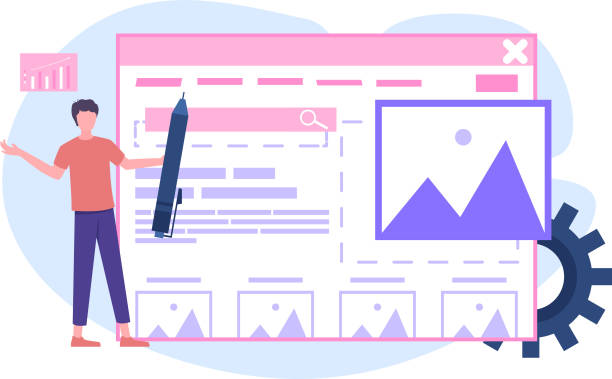
Just as #SEO is vital for a single-language website, international SEO is also essential for the success of a multilingual website design.
Without proper optimization for search engines in different languages and regions, even the best translated content may not reach the target audience.
One of the most important tools in multilingual SEO is the correct use of the hreflang tag.
This tag tells search engines like Google which version of the page is appropriate for which language and geographical region.
Incorrect use of hreflang can lead to serious SEO problems, including duplicate content and reduced rankings.
In addition to hreflang, keyword optimization for each language is also very important.
Keywords that are effective in one language might have a different meaning or not be common at all in another.
Therefore, you need separate keyword research for each language and target market.
URL structure also plays a role in international SEO; using subdirectories or subdomains can affect how pages are indexed by search engines.
Website loading speed, mobile compatibility, and internal and external linking are also important SEO factors that should be carefully examined for each language.
A comprehensive and thoughtful SEO strategy can significantly increase your multilingual website’s organic traffic.
This section is technical and explanatory.
User Experience (UX) in Multicultural Environments

The User Experience (UX) of a multilingual website design must go beyond mere text translation; rather, it must consider the cultural, visual, and behavioral differences of users in various regions.
A successful UX in a multicultural environment means creating a website that not only functions flawlessly but also aligns with the expectations and preferences of users in each culture.
For example, the visual design of the website, layout, and even the use of colors should be chosen with cultural sensitivity.
The color red symbolizes love in some cultures, while in others it can symbolize danger or anger.
#Multicultural_user_experience requires deep research and understanding of the target audience.
The display of dates and times, currency units, and contact forms must also be localized to make users feel comfortable.
Ensuring that website navigation is logical and intuitive for all languages is crucial.
This includes clearly placing the language switch and ensuring that all menus and buttons are correctly translated in each language.
Also, page loading speed and compatibility with various devices (mobile, tablet, desktop) must be optimized for all languages.
A poor user experience can quickly drive users away from your site, even if your content is outstanding.
The table below shows some aspects of UX and their considerations.
This section is analytical and guidance.
| UX Element | Multicultural Considerations | Design Tips |
|---|---|---|
| Layout | RTL support (Persian, Arabic), visual direction change of elements. | Using powerful CSS for flexbox/grid that supports RTL. |
| Images and Icons | Cultural meaning of images, avoiding stereotypes. | Generic or localized images for each region. |
| Forms and Inputs | Date, time, phone number, and postal code formats. | Validation and formatting of inputs based on local standards. |
| Navigation | Language switch position, clarity of language options. | Placing flags or language abbreviations in accessible locations. |
New Trends and the Future of Multilingual Websites

The world of the web is constantly changing, and multilingual website design is no exception.
New trends in this field focus on increasing intelligence and personalization.
One of these trends is the use of Artificial Intelligence (AI) and Machine Learning (ML) for translation and localization.
These technologies can make the translation process faster and more efficient, although human oversight is still needed to maintain quality and cultural accuracy.
Another is content personalization based on the user’s language and geographical location.
This means that the website can automatically display more relevant and localized content to the user.
Furthermore, we are witnessing an increased use of Progressive Web Apps (PWA) and AMP technology in multilingual environments, which contribute to faster and better website performance.
#Virtual_reality and #augmented_reality can also play an important role in the future of multilingual websites, especially in areas like tourism or education, by providing interactive and immersive experiences in various languages.
Broader adoption of user voice and voice search also means that multilingual websites need to be optimized to respond to voice queries in different languages.
These trends indicate that the future of multilingual websites is moving towards smarter, faster, and more personalized experiences.
This section is news and analytical.
Are you frustrated with your e-commerce website’s low conversion rate? Rasaweb transforms your e-commerce website into a powerful tool for attracting and converting customers!
✅ Significant increase in visitor-to-buyer conversion rate
✅ Unparalleled user experience to increase customer satisfaction and loyalty⚡ Get a free consultation from Rasaweb!
How to Maintain and Update Multilingual Websites
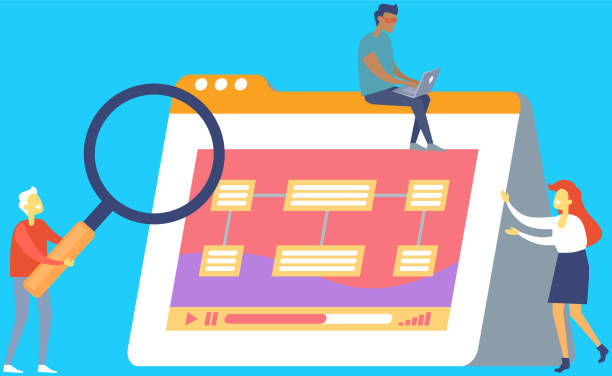
Creating a multilingual website design is not the end of the work; its regular maintenance and updating are essential to preserve its performance, security, and efficiency.
This process includes content updates, new translations, and ensuring the website’s compatibility with new CMS versions and plugins.
Every time new content is added in the original language, it must be ensured that its translations are also done quickly and with high quality.
Furthermore, monitoring website performance in each language and geographical region through web analytics tools (like Google Analytics) is very important for identifying potential issues and opportunities for improvement.
#Multilingual_website_maintenance signifies an ongoing commitment.
Website security is also a critical aspect.
Ensuring all components are up-to-date, using SSL certificates, and regularly backing up data are essential to prevent any security issues.
Also, the site’s SEO should be periodically reviewed for each language to ensure there are no hreflang errors or keyword ranking drops.
User feedback from different languages can also be a valuable source for continuous website improvement.
A well-maintained and updated website not only provides a better user experience but also achieves higher rankings in search engines, helping you remain competitive in international markets.
This section is guidance and explanatory.
The Impact of Multilingual Website Design on Digital Marketing

Multilingual website design directly impacts your digital marketing strategies and opens new doors to international markets.
By having content in different languages, you can run more targeted advertising campaigns on Google Ads or social media for each geographical and linguistic region.
This allows you to reach your audience more precisely with localized messages and increase your Return on Investment (ROI).
For example, for a specific product, you can run separate advertising campaigns with local keywords and localized offers in different countries.
#International_digital_marketing is almost impossible without a multilingual website.
Furthermore, a multilingual presence helps you operate more effectively in Content Marketing.
You can publish articles, blogs, and guides in different languages, which helps increase organic traffic and attract customers through search engines.
Using native social media networks in each country and publishing localized content there increases interaction and strengthens your brand at a local level.
Email marketing can also have a greater impact with personalized messages in the user’s native language.
In summary, a multilingual website is the foundation of a successful global digital marketing strategy and significantly facilitates the growth and expansion of your business.
This section is educational and analytical.
Frequently Asked Questions
| No. | Question | Answer |
|---|---|---|
| 1 | What is multilingual website design? | Multilingual website design refers to creating a website whose content is available to users in multiple different languages. This is usually done through a simple user interface for language switching. |
| 2 | Why should we design a multilingual website? | Multilingual website design helps you reach a wider audience globally, provide a better user experience for international users, and improve your global SEO. |
| 3 | What are the main methods for implementing multilingualism on a website? | The main methods include using subdomains, subdirectories, or URL parameters for each language, as well as using completely separate domains for each language. |
| 4 | For SEO, is it better to use a subdirectory or a subdomain? | From an SEO perspective, both subdirectories and subdomains can be effective. However, many SEO specialists prefer subdirectories due to better transfer of main domain authority. |
| 5 | What are the important points in translating multilingual website content? | Translation should be done by native translators, content should be localized in addition to translation to align with the target audience’s culture, and pure machine translation should be avoided. |
| 6 | What is the role of the hreflang tag in multilingual website SEO? | The hreflang tag helps search engines like Google display the correct language and regional version of a page to appropriate users, which also prevents duplicate content issues. |
| 7 | Can a website be made multilingual without coding? | Yes, in Content Management Systems (CMS) like WordPress, powerful plugins like WPML or Polylang exist that allow making a website multilingual without needing to code. |
| 8 | What are the challenges of multilingual website design? | Challenges include translation management, content localization, adherence to SEO principles for each language, technical support for different languages, and ensuring design consistency across various languages. |
| 9 | What is the difference between translation and localization? | Translation is merely rendering words from one language to another, whereas localization involves adapting content to the culture, customs, currency, date and time formats, and even appropriate colors for the target audience. |
| 10 | What is the best User Experience (UX) for language switching? | A clear and accessible language switch (usually in the header or footer), using language names instead of flags (due to regional diversity), and maintaining the user’s position after language change are important UX considerations. |
And other services of Rasaweb Advertising Agency in the field of advertising
Smart Digital Advertising: Designed for businesses seeking campaign management through precise audience targeting.
Smart Google Ads: Revolutionize digital branding with the help of Google Ads management.
Smart UI/UX: Professional optimization for campaign management using real data.
Smart Marketing Automation: Professional optimization to increase sales using custom programming.
Smart Sales Automation: A combination of creativity and technology for user engagement through key page optimization.
And hundreds of other services in the field of internet advertising, advertising consulting, and organizational solutions
Internet Advertising | Advertising Strategy | Advertorial
Resources
Benefits of multilingual website designInternational website design guideSEO tips for multilingual websitesChoosing the right CMS for a multilingual website
❓ Rasaweb Afarin Digital Marketing Agency, your comprehensive solution for growth and visibility in the online space. With our specialized services, including multilingual website design, take your business to the top.
📍 Tehran, Mirdamad Street, next to Bank Markazi, Kazerun Jonubi Alley, Ramin Alley, No. 6

